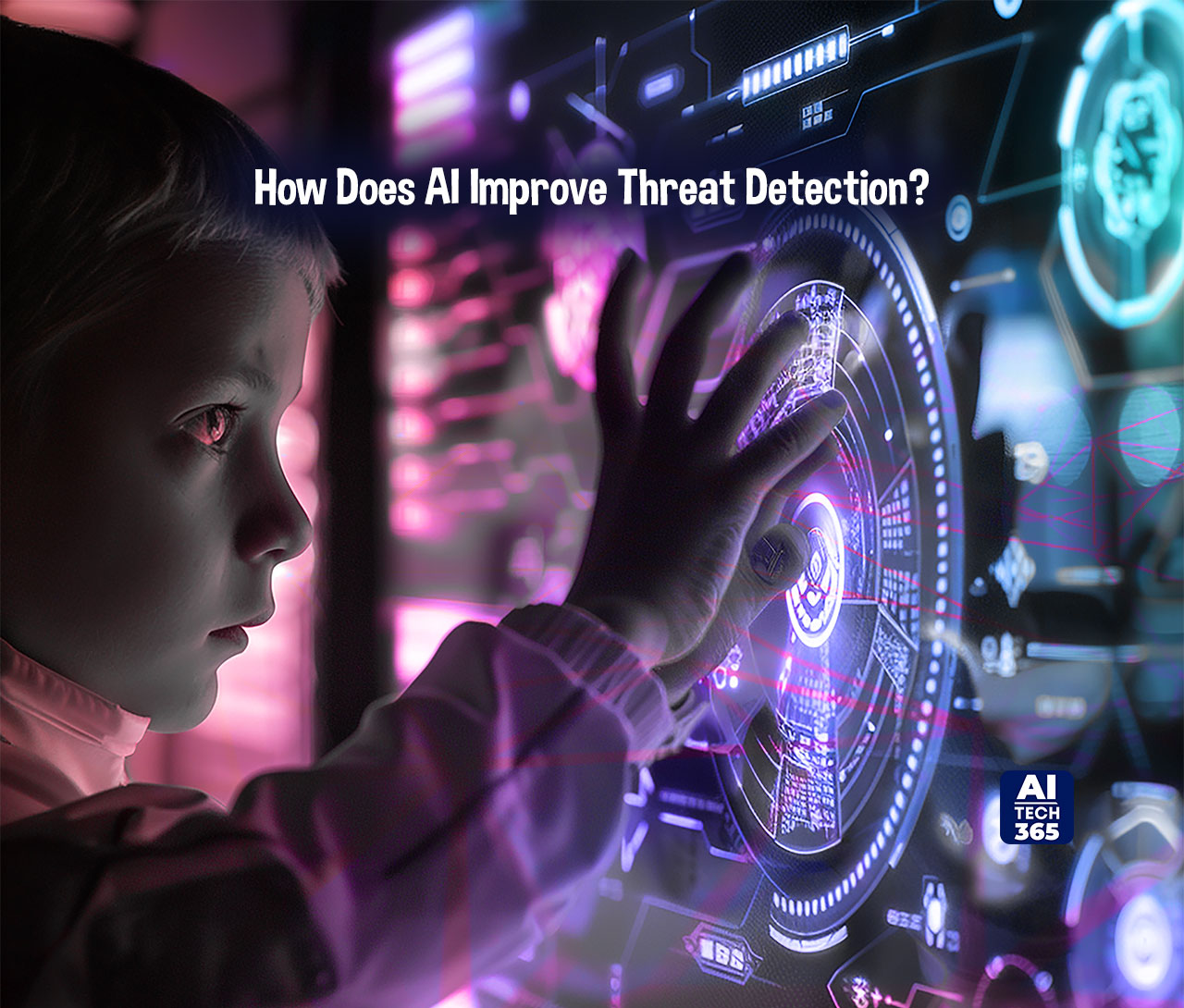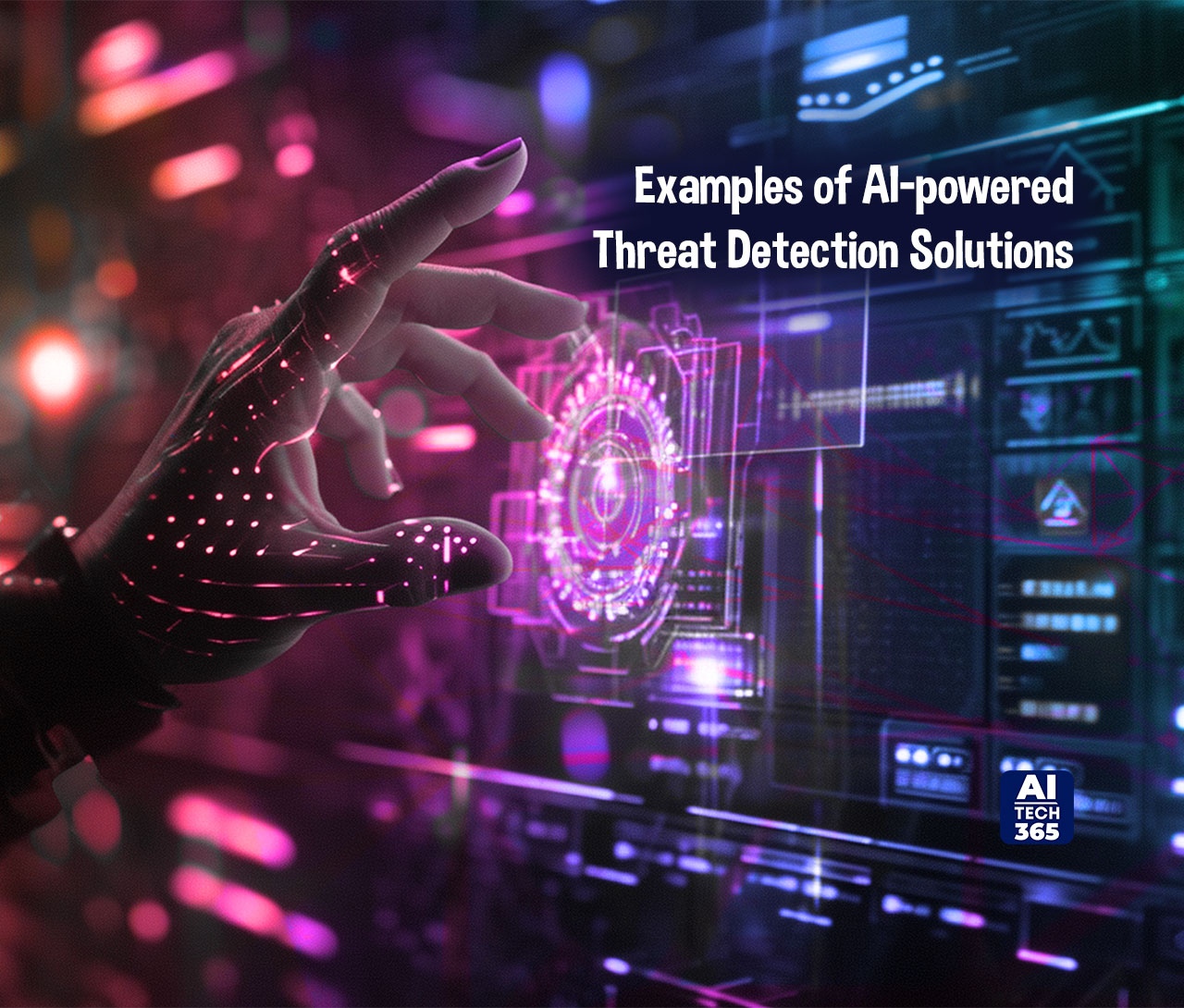Cyberattacks are becoming more common and companies are highly vulnerable to them. According to studies 45% of respondents state ineffectiveness at mitigating attacks and about 69% recorded targeted attacks. Advances in artificial intelligence (AI) have made threat detection driven by AI a lifesaver in the fight against cyberthreats.
These security analytics detect and thwart potential attacks. They can help you maintain the security of your IT infrastructure. In this blog, let’s look at AI-powered threat detection, its operation and significance.
What Is AI-powered Threat Detection?
AI-powered threat detection is the process of identifying and addressing potential cybersecurity risks by using AI technology and algorithms. Suspicious activity that might indicate cyberattacks can be identified by these AI-powered systems via machine learning.
Automated Threat Detection Vs AI-Powered Threat Detection
Automated threat detection with the use of technology in minimal human involvement tries to detect and fix possible cybersecurity threats. It uses established guidelines, trends, and known signs in showing things that might be questionable. These systems are capable of sorting through enormous volumes of data, including network logs and system events, and flagging anything that meets certain standards. By automating certain steps in the detection and response process, they enable organizations to react to threats more quickly and efficiently.
However, threat detection based on AI goes beyond preset rules and signatures. It analyzes data, finds trends, and locates anomalies that may be indicative of impending risks using techniques in artificial intelligence (AI) such as deep learning and machine learning (ML). These systems enable artificial intelligence-driven identification and action to adapt to new and changing threats, learn from historical data, and find ways to improve detection little by little. Moreover, they can conduct behavioral analytics, set up baselines of typical behavior, and identify anomalies or suspicious activity that ordinary methods may not detect.
How Does AI Improve Threat Detection?
AI makes threat detection better in several ways:
- Identifying Patterns: Artificial intelligence (AI) sifts through amounts of data to detect patterns using advanced algorithms such as deep learning. As AI learns from data and evolves, it becomes better at predicting and pinpointing risks.
- Behavior Analysis: AI establishes behaviors for users, systems and applications then monitors real time deviations from these norms. This proactive approach helps in identifying potentially risky activities like insider threats or persistent attacks.
- Continuous Monitoring: AI powered systems keep an eye on user actions, system logs and network traffic round the clock. This constant surveillance enables responses when potential threats are detected.
- Automation: AI streamlines threat detection and response procedures cutting down on efforts for security analysts and expediting incident handling. It efficiently analyzes volumes of security data to enhance operational efficiency and scalability.
- Enhanced Accuracy: By analyzing datasets, AI can pinpoint anomalies that human analysts might miss. With continuous learning, AI improves its detection capabilities, over time.
- Supporting Security Teams: AI aids security teams by managing, detecting and preventing threats effectively.
- Advanced algorithms and predictive analytics: AI uses predictive analytics to combat malware, identify patterns, and prevent attacks proactively thereby minimizing risks.
Examples of AI-powered Threat Detection Solutions
- IBM Threat Detection and Response Services: IBM’s services combine various detecting tools through the use of AI. These are combined so they offer an enterprise-wide view of threat detection while updating security defenses.
- Vectra AI: Vectra AI is a key player in enhanced attack detection and stopping systems. It uses smart AI to spot and stop complex cyber threats, gaining praise as a top pick for finding and dealing with cyber attacks.
- CrowdStrike Falcon: It is an AI based cybersecurity platform, which provides detailed information on threat detection, analysis, and response capabilities.
Examples of Automated Threat Detection
- SolarWinds Security Event Manager (SEM): This tool is based on event categories or log activity that are carried out by automatically gathering, organizing, and normalizing log data and comparing it to a threat database feed.
- Blumira: Offers context-rich data, prioritized warnings, correlated threat analysis, automatic log parsing, and customisable reporting dashboards for sophisticated automated threat detection.
- NetWitness Platform: This tool, for monitoring IT infrastructure utilizes analytics and machine learning to detect potential risks and provide immediate alerts.
Can AI-Powered Threat Detection Replace Human Analysts?
Human analysts remain essential due to their contextual knowledge of the laws, rules, and socio-political factors that generate threats, even as artificial intelligence (AI) accelerates and improves threat intelligence workflows. They interpret patterns that evade algorithms and identify subtle risks. AI can’t beat the human brain in being creative and flexible when solving problems.
This synergy between AI and human analysts helps companies to adapt against cyber threats. AI’s precision and speed combined with human creativity. Intuition and adaptability produce a more powerful and advanced defense against ever-evolving cyber threats. This seamless integration guarantees that a strong cybersecurity strategy benefits from the depth of human expertise and understanding as well as the quick analytical capabilities of AI.
Final Take on the Challenges of AI-Powered Threat Detection
As AI is incorporated into cybersecurity more extensively, a number of ethical issues and difficulties surface. Privacy, data security, and potential misuse are major problems raised by the use of AI in surveillance and danger detection. It is a difficult task for corporations to strike a balance between security and privacy while upholding moral principles.
Furthermore, AI-powered threat detection systems are not perfect; they can produce false results, which mistakenly classify benign activity as a threat. AI algorithms must be continuously improved and adjusted in order to reduce these errors.
A growing trend among cybercriminals is their sophistication, which includes using adversarial assaults to target AI systems directly. In order to fool AI algorithms, these attacks modify input data, misclassifying threats or omitting real attacks, which calls for constant defense tactics.
Another major obstacle is the complexity and resource intensity of putting AI-driven threat detection systems into place and keeping them maintained, especially for smaller companies that might not have the resources. Moreover, AI algorithms—particularly deep learning models—often operate as “black boxes,” making it challenging to comprehend and have faith in the judgments they make. By building accountability and trustworthiness in AI-driven threat detection systems we can ensure openness and interpretability.




